 |
| February 22, 2022 | Volume 18 Issue 08 |
Designfax weekly eMagazine
Archives
Partners
Manufacturing Center
Product Spotlight
Modern Applications News
Metalworking Ideas For
Today's Job Shops
Tooling and Production
Strategies for large
metalworking plants
100 Years Ago: Type 30 -- first Bugatti with 8-cylinder engine and front brakes
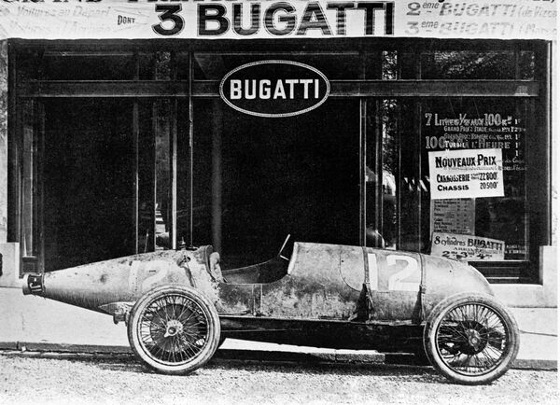
The Bugatti Type 30 racing prototype before competing in the 1922 Grand Prix de France in Strasbourg. [All images courtesy: Bugatti]
Bugatti rolled out the Type 30 in 1922, one of the fastest production automobiles of its time. In addition to its increased power, the model made an unforgettable impression with its many technical innovations, including being the brand's first production car to feature an eight-cylinder engine and front brakes.
According to the company, the inline eight-cylinder engine consisted of two four-cylinder blocks, housing for the overhead camshaft, and a monobloc crankcase firmly attached to the frame. A year before, Ettore Bugatti, the company's founder and lead innovator, had been planning a 3-liter, eight-cylinder engine, incorporating it into the Type 28 prototype of 1921. However, Ettore redesigned the engine following a change in the Grand Prix racing regulations that limited displacement to 2 liters.
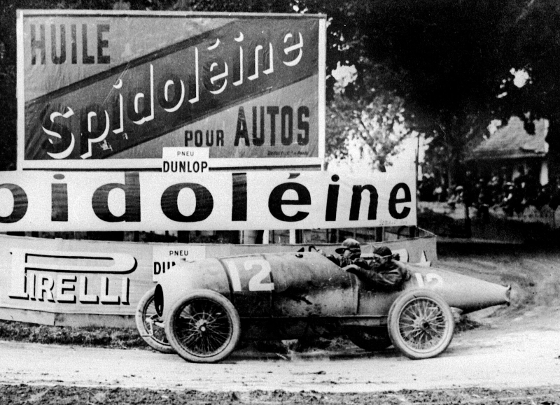
The Bugatti Type 30 racing prototype makes a sharp right-hand turn at the 1922 Grand Prix de France in Strasbourg.
In the Type 30's engine design, the vertical shaft is on the front side of the engine and transfers the crankshaft's revolutions to the camshaft. This coordinates two overhead intake valves and one larger outlet valve for quick gas exchange (similar to an airplane engine designed by Ettore Bugatti). The spark plugs are initially fired by magneto dual ignition and subsequently by battery ignition. Two Zenith carburetors supply the eight-cylinder engine with sufficient air-fuel mixture, and there are two sets of four-exhaust manifolds on the left.
Depending on the use scenario and configuration, the engine delivered between 74 and 99 hp. With speeds in the range of 75 to 90 mph, the Type 30 was one of the fastest production automobiles of its time. The driver activated the four forward gears and one reverse gear using their right hand.
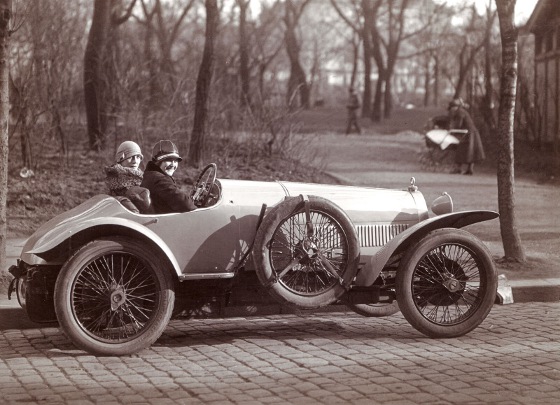
Elisabeth Junek, pictured in her Type 30, was one of motor racing's early pioneers and the first woman to win a Grand Prix.
Bugatti first installed the new engine in the specialty Type 29 race car with a short wheelbase, where it was able to demonstrate its power, performance, and stability in several races. In addition to technology, power output, and quality, Ettore Bugatti paid attention to the look of the engine and gave it an angular, clearly structured layout. He was also among the very first to use racing as a platform to demonstrate the greatness of his cars by showcasing them in front of crowds of spectators.
With the forged front axle taken from the Type 22, the Type 30 was the first Bugatti production vehicle to feature front brakes. 100 years ago, other cars only braked using the rear axle. With Bugatti, cast brake shoes with helical notches that directly interacted with the rear steel brake drums allowed for safe deceleration. A hydraulic system was featured on the front axle for the first time, but it was replaced by a cable system in 1924 due to material problems.
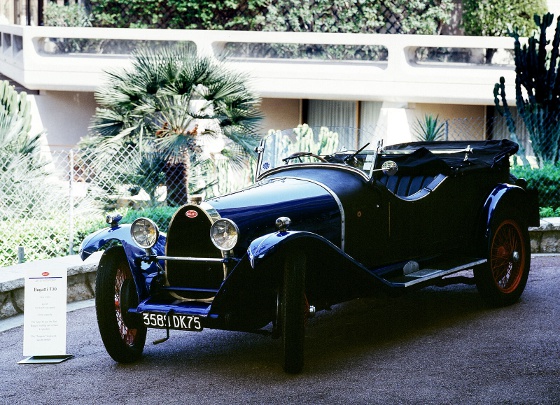
A later version of the Type 30 featured a cabriolet roof.
Ettore Bugatti further enhanced comfort levels on the Type 30 production vehicle. A multilayered leather package absorbed the shocks caused by generally poor road conditions. Ettore innovated with the Type 30 in terms of reliability, too, using a new type of screw lock for the first time, which he patented. Screws with an integrated washer and a new thread pitch no longer came loose in spite of vibrations and shocks, and they were tighter than other screw connections.
Variations to the Type 30's bodywork were developed between 1922 and 1926, including sporty four-seater tourers as well as two-seater coupes and convertibles. Coachbuilders even produced individual shapes based on the Type 30. The Type 32 "Tank" race car with its streamlined bodywork and a top speed of up to 100 mph was also based on the Type 30.
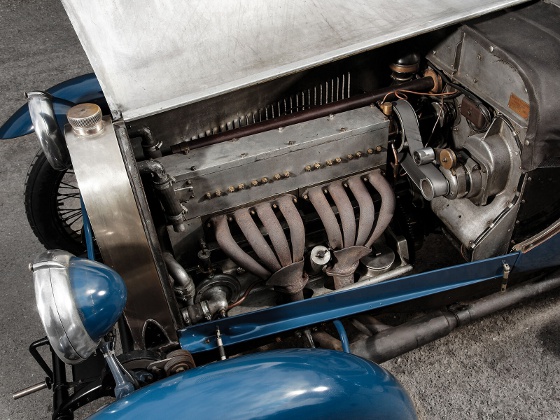
The Type 30 was Bugatti's first production car to feature an eight-cylinder engine.
Bugatti sold around 600 units of the Type 30 up until 1926, when it was replaced by the Type 38. Customers wrote to Ettore Bugatti to attest to the Type 30's powerful and sporty handling.
"The Type 30 is crucial to understanding the story of Bugatti, and how the early period under founder Ettore Bugatti's leadership helped to further establish the brand at the apex of engineering excellence," said Christophe Piochon, current president of Bugatti. "The Type 30 was a catalyst of Bugatti's success and journey toward becoming the leader manufacturing of luxury hyper sports cars. The spirit with which Ettore engineered the Type 30 is still very much alive within the walls of our Molsheim Atelier to this day."
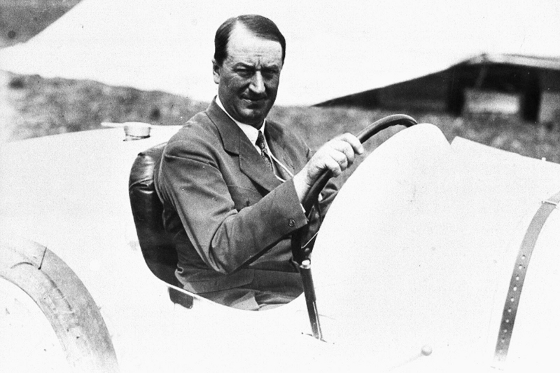
Ettore Bugatti. [Image credit: Copyright Bugatti Automobiles S.A.S/Courtesy of Cité de La'Automobile -- Collection Schlumpf]
Part of Italian-born French citizen Ettore Bugatti's (1881-1947) brilliance was that his technical mastery extended across the entire spectrum of automotive development and beyond. Besides many automotive innovations (including about 1,000 patents for everything from fasteners to bearings to wheel rims, an unbreakable windscreen, ultra-light folding seats, and automatic filler caps), he created his own distillery when he was unhappy with the liqueur that was available to him. He designed his own bicycles, because he believed the best on the market weren't good enough. Ettore's patents also included a cylindrical razor, an ultra-light frame for bicycles and motorcycles, and security locks. He even created a casting rod for anglers. He also designed countless items for practical everyday use that were not patented, including gates, doors, lighting fixtures, armchairs, vices, surgical instruments, horse harnesses, and blinds for windows.
Source: Bugatti
Published February 2022
Rate this article
View our terms of use and privacy policy
